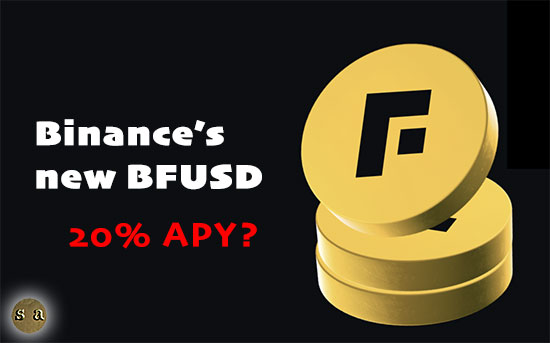Binance has recently introduced BFUSD, which is not actually a stablecoin but a reward-bearing margin asset for futures trading.
This new product offers users a crazy-high annual percentage yield (APY) of 19.55%, making it an attractive option for those seeking high returns, but also raising eyebrows on whether the APY is real or not.
Features of BFUSD
Yield and Rewards:
-
-
- Users can earn daily rewards simply by holding BFUSD in their Binance UM (Unified Margin) Futures accounts.
- The high APY of 19.55% is significantly higher than many other similar products in the market.
-
Functionality:
-
-
- BFUSD serves as collateral with a 100% collateral ratio in Multi-Asset Mode, enhancing trading potential.
- It can be used for futures and perpetuals trading within the Binance ecosystem.
-
Supply and Stability:
-
-
- The total supply of BFUSD is capped at 20 million tokens.
- It maintains stability with a collateralization ratio of 105.54%, supported by a reserve fund holding 1.1 million USDT as of November 17, 2024.
-
How It Works
-
- Users can acquire BFUSD through Tether USD (USDT) swaps.
- Rewards are calculated based on the lowest hourly BFUSD balance in users’ accounts, derived from hourly snapshots.
- Distributions are made daily to users’ UM Futures accounts.
Limitations and Restrictions
-
- Each user’s quota for holding BFUSD is determined by their VIP level on Binance.
- Users from regions where Binance Futures are not allowed, such as Brazil, don’t have access to BFUSD.
- BFUSD does not accrue user rewards in countries where the Markets in Crypto-Assets (MiCA) regulation is in effect.
More Context
BFUSD comes after Binance’s decision to phase out support for its previous stablecoin, BUSD, in February 2024 due to regulatory pressures. It’s important to note that while BFUSD offers high yields, the exact mechanism for generating these returns has not been fully clarified by Binance.
The introduction of BFUSD has sparked discussions in the crypto community, with some drawing comparisons to past high-yield products that faced challenges. As such, potential users may want to approach this new product with caution and await further details from Binance regarding the sustainability of its high yields.
details on the high APY
Binance’s BFUSD generates its high Annual Percentage Yield (APY) of approximately 19.55% through two primary strategies:
-
- Delta hedging: BFUSD utilizes the difference between spot and futures markets to collect funding fees. This strategy involves taking advantage of price discrepancies and funding rates in cryptocurrency derivatives markets.
- Ethereum staking: A portion of the returns is generated by staking Ethereum. This method leverages the Ethereum network’s Proof-of-Stake consensus mechanism to earn rewards.
It’s important to note that while Binance has provided these general strategies, the company has not yet offered comprehensive details on the exact mechanisms for generating such high yields. The sustainability of this high APY has been a topic of discussion in the crypto community, with some expressing skepticism due to past experiences with high-yield products in the cryptocurrency space.
Binance calculates the rewards based on the lowest hourly BFUSD balance in users’ accounts, derived from hourly snapshots. These rewards are then distributed daily to users’ UM Futures accounts. The amount of BFUSD available to traders is tied to their VIP level on the Binance platform, which determines their holding quota.
While the high APY is certainly attractive, potential users should approach this new product with caution and await further clarification from Binance regarding the long-term sustainability of these returns. It’s crucial to remember that BFUSD is not a stablecoin, but rather a reward-bearing margin asset specifically designed for futures trading within the Binance ecosystem.


